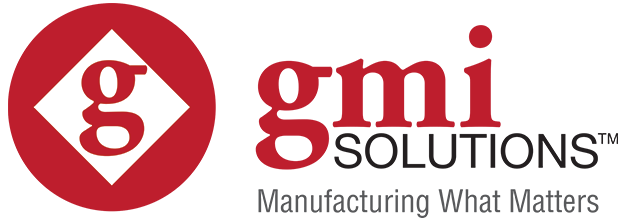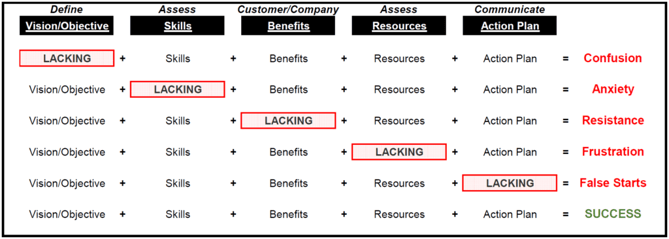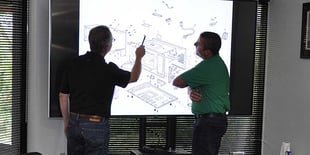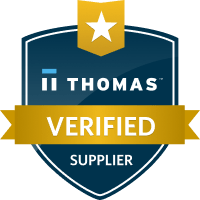5 Elements of Managing Change Successfully That Every OEM Should Know

Written by Michael Poehlmann
Very few OEMs are able to perpetually sustain the same business model. It’s a simple fact, but it also hints at the inevitability of change — and change evokes complex responses.
Why? Change is not easy. Employees — an organization’s most important asset – don’t always easily embrace transitions. Things like reorganizing teams, revising reporting structures, or perhaps rearranging the physical space can challenge comfort zones and put people at odds with change.
Accentuate The Positive
Managing expectations by framing change as positive and an asset to your organization is essential. It can be a daunting task, but contemporary innovators like Elon Musk advocate for procedures and processes that encourage change and get people involved — essentially giving them ownership of the collective betterment of the company.
Musk’s approach is demonstrated in this excerpt from a email he sent to the entire team at Tesla:
"Anyone at Tesla can and should email/talk to anyone else according to what they think is the fastest way to solve a problem for the benefit of the whole company. You can talk to your manager's manager without his permission, you can talk directly to a VP in another dept., you can talk to me, you can talk to anyone without anyone else's permission. Moreover, you should consider yourself obligated to do so until the right thing happens. The point here is not random chitchat, but rather ensuring that we execute ultra-fast and well. We obviously cannot compete with the big car companies in size, so we must do so with intelligence and agility."
This is easiest when a company is young and/or small. You can very quickly assess situations, decide on a common approach, and go solve the problem. Difficulties arise as the company grows and the organizational chart gets more layered. The added structure is necessary, but it also comes with a variety of potential setbacks. That’s why employee buy-in is critical to make changes that lead to positive and productive outcomes.
Getting the Team to Embrace Change
When you break down change, whether major or minor, at a huge company or a small one, the elements required to help employees accept and even champion change are universal:
- Vision/Objective of the change needs to be understood by all.
- Skills to accomplish the various parts of the change need to be internal or available.
- Benefits of the change need to be understood – and may vary from person-to-person or department-to-department.
- Resources to accomplish the change need to be sufficient, both internally or externally.
- Action Plan for change implementation needs to be clearly laid out and include a post-change validation of success. This may take some time, since results may not be immediate.
It’s important to give equal weight to all elements. Inconsistency generally produces a mixed response from employees that could make teams more susceptible to change-aversion. Finding the right cadence can be difficult at first, but over time it becomes second nature, especially if you keep the following in mind:
Vision/Objective
Everyone on the team needs to understand the literal vision – the desired outcome – of the change that is being implemented and why this outcome is important. This messaging needs to be articulated in a thoughtful way to ensure clarity and full understanding. The result of not assembling and communicating the vision properly – even if all the other elements are there – is confusion.
Skills
You can’t generally ask a salesperson to calculate the requirements for mechanical strength requirements of a technically challenging engineering project; it’s important that the people who are being asked to execute portions of the change either have (or have access to) the skills they need to feel like valid participants. If people do not have the required skills – or are unsure they have access to them – the result is anxiety.
Benefits
Each area, team or person needs to understand the benefits they will realize directly. The benefits may occasionally be more nebulous for certain people or departments, but every attempt should be made to define direct, individual benefits for everyone. That is what will get the entire team working harder together; the idea that they can each make their own situation better. If benefits are misunderstood, will generally create an environment of resistance.
Resources
Just like asking someone to do something they are not capable of (see Skills, above) you also cannot ask someone who is already extremely busy to execute their part of the implementation if they have no available time. People who are overworked tend to be more resistant to change – especially if they already feel that their share of the workload is larger than what others are being asked to carry. If resources are not readily available or made available, individuals will express frustration.
Action Plan
This element is listed last by design. The action plan is all too often the baseline for companies that are changing. The assumption almost always is along the lines of “as long as we tell people what they need to do, and track progress, the change will go well”. While the action plan is critical, it should not be the focus. If there is not a clear path to implement the change, in the form of an action plan, it will cause false starts.
The Best (Universal) Tool for Managing Change
When you roll all the above elements together, you end up with a matrix that looks something like this:
You may already be familiar with the matrix as versions of it have appeared across businesses and online in various forms for years. The terminology may vary, but the essence remains the same.
Moreover, the matrix is very accurate. It can point you to “aha” moments that explain why a change may have gone awry. Was it not a purposeful change? Were there participants not included? Were the necessary resources not available?
The only constant is change. Businesses with the foresight to take measured steps to gain full employee support reach successful outcomes easier than those that unilaterally impose change. The same holds true when selecting contract manufacturers. Suppliers that are nimble and adaptive are assets to OEMs who view change as essential to growth. Contact GMI Solutions to discuss how we can be of service to you.







